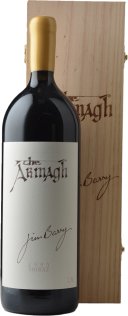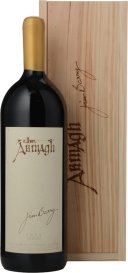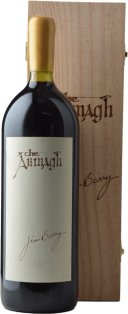Any price
Penfolds Bin 128
Created in 1962, Penfolds Bin 128 is a regional wine that reflects the unique climate and growing conditions of South Australia's Coonawarra district and the relatively elegant style of cool climate Shiraz. From the 1980 vintage, French oak replaced American, highlighting the pepper, spice and floral characteristics that define this style. Since the mid-1980s, a greater attention has been paid to fruit ripeness, resulting in a wine that is fuller in style and structure.
Clonakilla O'Riada Shiraz
Sourced from vineyards surrounding Canberra, the Clonakilla O'Riada Shiraz has been lovingly embraced as little brother to the iconic Shiraz Viognier. Also co-fermented with a touch of Viognier, the O'Riada shows a more fruit forward presence, yet still with that unmistakable Tim Kirk elegance and purity that is a theme throughout all of his wines.
Jim Barry The Armagh Shiraz
Elegant and aristocratic kaleidoscope of aromas, an abundance of fruit flavours, blackberry, mulberry and blueberry with supporting complexity of mint, eucalypt, rhubarb, Turkish delight and cinnamon. The palate offers a rich tapestry of enjoyment and fulfilment of flavours of raspberry, strawberry and boysenberry to name a few. Made by Jim Barry.
Head The Blonde Shiraz
Fresh blackberry and boysenberry, spice, liquorice, tar and dried herbs. Medium bodied, juicy bramble fruits, crisp boysenberry acidity, salted beef, firm but fine grained drying tannin, and a long fresh meaty herb infused finish.
Head The Brunette Shiraz
Colour is deep red. The nose shows aniseed, tar, FruChocs and spicy oak. The fine palate entry has mulberry, cranberry, aniseed and liquorice flowing delicately with Rhone-like spicy, chewy, savoury tannins.
Opus One
The 2014 Opus One exudes subtle aromas of fragrant florals, fresh garden herbs and forest floor that give way to a concentrated blend of red cherry, blackberry and black currant. Fine-grained tannins offer a velvety texture and complex structure that builds to a long, vibrantly fresh finish with a touch of mocha. Enjoyable now, the wine will delight for years to come. Oakville, California: Home to some of the most sought-after Cabernet Sauvignon in America, Napa Valley's Oakville district stretches across the center of Napa's valley floor and foothills between the Vaca and Mayacamas Mountains. This AVA is home to the legendary To Kalon Vineyard and Martha's Vineyard, as well as many powerhouse wineries including Screaming Eagle, Silver Oak, Robert Mondavi, Opus One, Far Niente and Groth. The climate is generally warm and agreeable, resulting in year after year of favorable vintages. Summer days see a gentle tug of war between warmer inland air and the cool air coming in from the San Pablo Bay, creating an ideal environment to grow red varieties. Oakville's diverse soils, namely ancient sea bedrock, clay and gravel, are well-drained, and perfect for high-caliber viticulture. Cabernet here is often bottled varietally but is also popular in Bordeaux Blends. Oakville wines are known for their silky, sensual textures, structured tannins, dark and brooding fruit and lovely aromatics. These age-worthy and prestigious wines are favored by collectors throughout the world.
Haha Pinot Noir
Head Over Heels Cabernet Merlot
The Head Over Heels Cabernet Merlot has deep youthful crimson and mauve hues. The palate is medium bodied with soft tannins offering generous dark fruit flavours complemented by a dusty oak finish. This easy drinking wine is a versatile partner to a wide range of red meat and rich pasta dishes. A dry, full bodied wine made to drink now but will cellar for 2 years.
Head Over Heels Shiraz
This Shiraz offers an abundance of expressive aromas, predominantly of blackberry and plums, along with toasty sweet oak. A generous and concentrated palate offers flavours of blackberry, black cherry, and plum. Complex oak characters of coffee, vanilla and caramel complement the full fruit flavours and create a long rich and satisfying finish, making it perfectly matched with a cheese platter or creamy pasta dish.
Stefano Lubiana Primavera Pinot Noir
Hailing from northern Italy, the Lubiana family have been winemakers for generations. Since 1990 Stefano has continued his family's legacy in the pristine vineyards of Tasmania. The fruit for this wine comes from some of the best vineyards in Derwent River. Stefano's care and meticulous attention to detail, result in a wine of both power and elegance.





















































